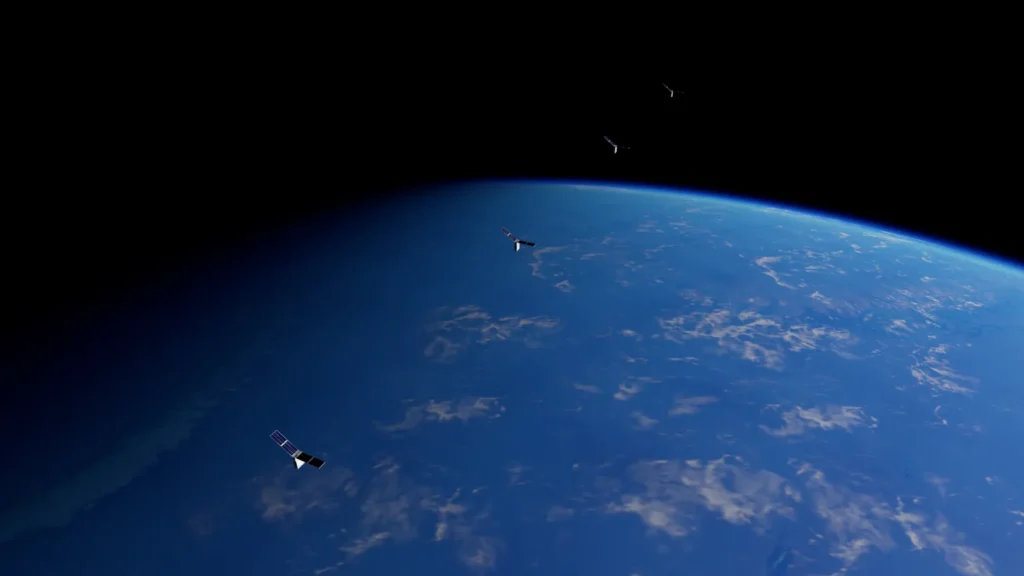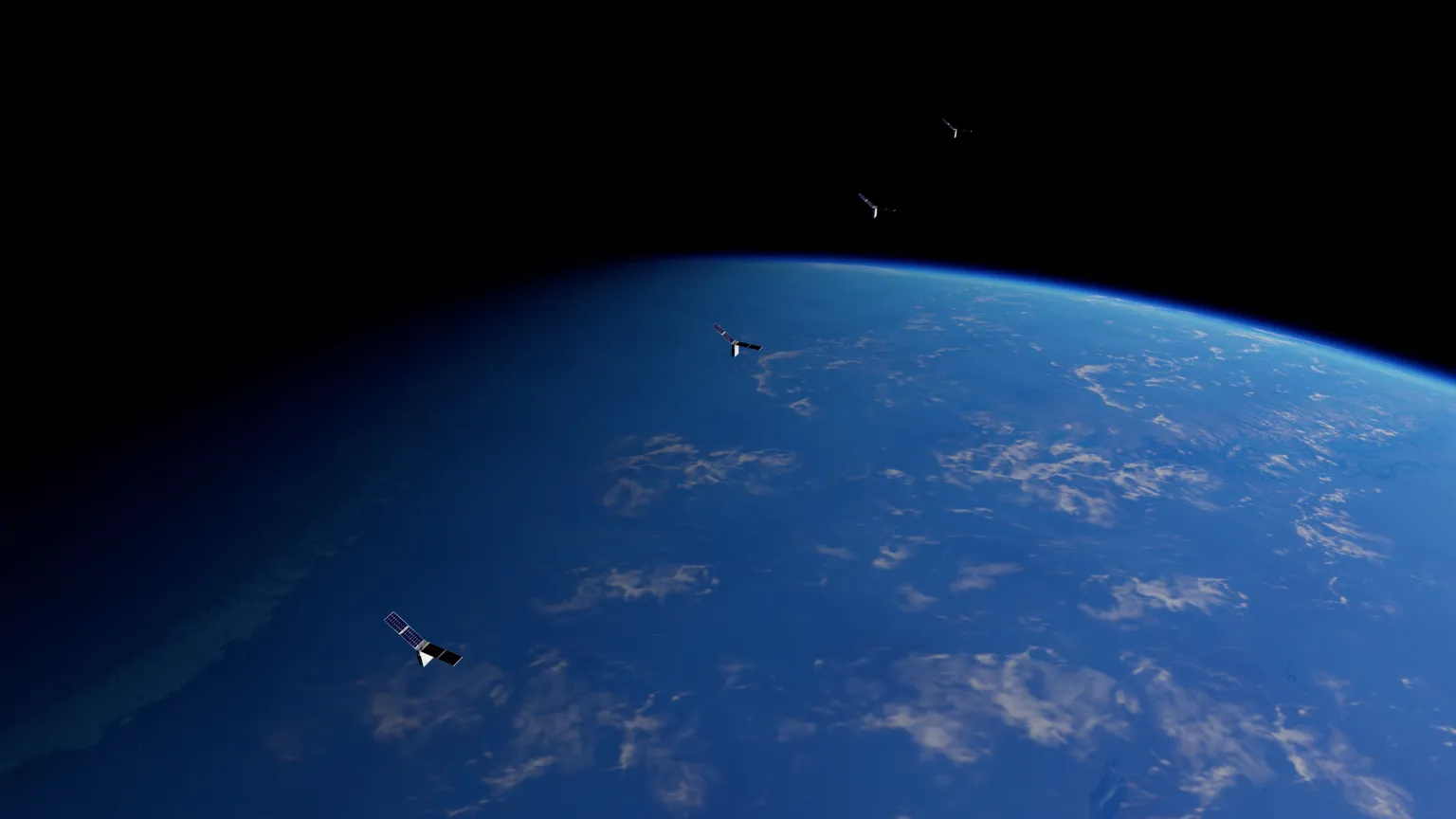Starling primary mission, Starling satellite success, Starling mission completion, satellite swarming technology, space exploration, satellite technology advancements, Starling space mission, satellite innovation
Discover how Starling’s groundbreaking swarming technology has achieved a significant milestone with the successful completion of its primary mission. Learn about the innovative satellite techniques that propelled this mission to success and the future implications for space exploration and satellite technology.

After ten months in orbit, the Starling spacecraft swarm has successfully achieved its primary mission objectives, marking a significant milestone in the development of swarm configurations. This accomplishment demonstrates the potential of using swarms of satellites for deep space exploration. Such autonomous networks of spacecraft can self-navigate, manage scientific experiments, and execute maneuvers, all while reducing the burden of significant communication delays with Earth.
A Landmark Achievement
“The success of Starling’s initial mission represents a landmark achievement in the development of autonomous networks of small spacecraft,” said Roger Hunter, program manager for NASA’s Small Spacecraft Technology program at NASA’s Ames Research Center in California’s Silicon Valley. “The team has been very successful in achieving our objectives and adapting in the face of challenges.”
Sharing the Work
One of the key experiments onboard Starling, the Distributed Spacecraft Autonomy (DSA) experiment, demonstrated the swarm’s ability to optimize data collection across the spacecraft. The CubeSats analyzed Earth’s ionosphere by identifying interesting phenomena and reaching a consensus on an approach for analysis. By distributing observational tasks among the swarm, each spacecraft can share the load, observe different data, or work together for deeper analysis, thereby reducing human workload and keeping the spacecraft operational without new commands from the ground.
Starling’s success in autonomously distributing information and operations data between spacecraft to generate efficient work plans is groundbreaking. It’s the first demonstration of a fully distributed onboard reasoning system capable of quickly reacting to changes in scientific observations.
Communicating Across the Swarm
For a swarm of spacecraft to operate effectively, a robust communication network is essential. The Mobile Ad-hoc Network (MANET) experiment successfully established a network in space, allowing the swarm to relay commands and transfer data between each other and the ground. This network also facilitated cooperative sharing of information about other experiments.
The MANET experiment achieved all its objectives, including demonstrating the routing of commands and data to a spacecraft experiencing communication issues. This capability showcases the robustness of a cooperative spacecraft swarm. “The success of MANET demonstrates the robustness of a swarm,” said Howard Cannon, Starling project manager at NASA Ames. “For example, when the radio went down on one swarm spacecraft, we ‘side-loaded’ the spacecraft from another direction, sending commands, software updates, and other vital information from another swarm member.”
Autonomous Swarm Navigation
Navigating and operating in relation to each other and the planet is crucial for a swarm of spacecraft. The Starling Formation-Flying Optical Experiment (StarFOX) uses star trackers to recognize fellow swarm members, other satellites, or space debris against the background field of stars. It then estimates each spacecraft’s position and velocity. This experiment is the first-ever published demonstration of such swarm navigation, including tracking multiple swarm members simultaneously and sharing observations to improve accuracy in determining each spacecraft’s orbit.
Near the end of mission operations, the swarm was maneuvered into a passive safety ellipse. In this formation, the StarFOX team achieved a groundbreaking milestone by demonstrating the ability to autonomously estimate the swarm’s orbits using only inter-satellite measurements from the spacecraft star trackers.
Managing Swarm Maneuvers
Autonomously planning and executing maneuvers is essential for developing larger satellite swarms. This capability saves time and reduces complexity. The Reconfiguration and Orbit Maintenance Experiments Onboard (ROMEO) system tests onboard maneuver planning and execution by estimating the spacecraft’s orbit and planning a maneuver to a new desired orbit.
The experiment team has successfully demonstrated the system’s ability to determine and plan changes in orbit. They are now working to refine the system to reduce propellant use and demonstrate the execution of these maneuvers. The team will continue to adapt and develop the system throughout Starling’s mission extension.
Swarming Together
With the completion of Starling’s primary mission objectives, the team is embarking on a mission extension known as Starling 1.5. This phase will test space traffic coordination in partnership with SpaceX’s Starlink constellation, which also has autonomous maneuvering capabilities. The project aims to explore how constellations operated by different users can share information through a ground hub to avoid potential collisions.
“Starling’s partnership with SpaceX is the next step in operating large networks of spacecraft and understanding how two autonomously maneuvering systems can safely operate in proximity to each other. As the number of operational spacecraft increases each year, we must learn how to manage orbital traffic,” said Hunter.
Future Prospects
NASA’s Small Spacecraft Technology program, based at Ames and within NASA’s Space Technology Mission Directorate (STMD), funds and manages the Starling mission. Blue Canyon Technologies designed and manufactured the spacecraft buses and provided mission operations support. Rocket Lab USA, Inc. offered launch and integration services. Partners supporting Starling’s payload experiments included Stanford University’s Space Rendezvous Lab, York Space Systems, CesiumAstro, L3Harris Technologies, and NASA’s Game Changing Development program.
For Starling’s mission extension, partners include SpaceX, NASA’s Conjunction Assessment Risk Analysis (CARA) program, and the Department of Commerce. SpaceX manages the Starlink satellite constellation and the Collision Avoidance ground system.
In summary, Starling’s success marks a significant step forward in the development of autonomous satellite swarms. These advancements pave the way for future deep space exploration, showcasing the potential for autonomous networks of spacecraft to operate efficiently and effectively, minimizing human intervention and communication delays. As the mission continues to evolve, it will provide valuable insights into managing large constellations of satellites and ensuring safe and efficient operations in space.
Read More-
